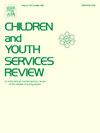以社区为基础的学习合作的可持续性,以改善对创伤知情循证实践的使用
IF 2.4
2区 社会学
Q1 FAMILY STUDIES
引用次数: 0
摘要
目的 大多数经历过心理创伤的青少年都没有接受过以证据为基础的心理创伤干预。为增加以创伤为导向的循证实践(EBPs)的使用而做出的努力已将学习合作(LC)确定为一种有效的培训和实施模式,但很少有研究对其可持续性成果进行评估。本研究通过描述提供者、机构和社区层面在培训后平均 5.3 年对基于创伤的 EBPs 的使用情况,考察了基于社区的 LC(CBLC)的可持续性。参加者接受了创伤认知行为疗法(TF-CBT;临床方向)、循证治疗规划(EBTP;经纪人/个案经理方向)或支持创伤认知行为疗法和循证治疗规划实施策略(高级领导方向)的培训。临床和经纪人方向的参与者报告了他们目前的就业情况和过去三个月内 EBP 的使用情况。结果在提供者层面,只有 36.5% 的临床路径参与者继续使用 TF-CBT,28.1% 的经纪人路径参与者继续使用 EBTP。提供者晋升到主管和领导岗位支持了 EBP 的可持续性。机构层面的结果表明,89% 的临床机构和 60% 的中介机构继续使用 TF-CBT 和 EBTP。结论研究结果表明,CBLC 模式带来了一些持续的社区层面的变化,因为各机构继续使用创伤知情的 EBPs,并且经过培训的提供者扩展到了当地社区的其他机构。提供者的晋升也增加了 CBLC 受训者在领导岗位上的代表性。结果表明,将可持续性作为一个多层次的实施成果来衡量,可以更好地了解实施的成功与否。本文章由计算机程序翻译,如有差异,请以英文原文为准。
The sustainability of a community-based learning collaborative to improve the use of trauma-informed evidence-based practices
Purpose
Most youth who experience trauma do not receive evidence-based trauma intervention. Efforts to increase use of trauma-informed evidence-based practices (EBPs) have identified the learning collaborative (LC) as an effective training and implementation model, yet few studies have evaluated sustainability outcomes. This study examined the sustainability of a community-based LC (CBLC) by describing provider, agency, and community-level use of trauma-informed EBPs, an average of 5.3 years after the training.
Methods
106 participants from 20 agencies completed a follow-up survey after a CBLC training. Participants were trained in Trauma-Focused Cognitive-Behavior Therapy (TF-CBT; clinical track), in Evidence-Based Treatment Planning (EBTP; broker/case manager track), or in strategies to support TF-CBT and EBTP implementation (senior leader track). Clinical and broker track participants reported on their current employment and EBP use within the past three months. Senior leaders for all 20 agencies provided information about the use of trauma-informed EBPs at their agencies.
Results
At the provider-level, only 36.5 % of the clinical track continued to use TF-CBT and 28.1 % of the broker track continued to use EBTP. Provider promotion to supervisory and leadership positions supported EBP sustainability. Agency-level outcomes indicated that 89 % of clinical agencies and 60% of broker agencies continued to use TF-CBT and EBTP. Although retention of providers within agencies was low, LC trained clinicians and brokers spread to twenty-four new agencies in the community providing psychotherapy and/or case management services to youth.
Conclusions
Findings suggest the CBLC model resulted in some sustained community-level changes as agencies continued to use the trauma-informed EBPs and trained providers spread to other agencies within the local community. Provider promotions also increased representation of CBLC trainees in leadership positions. Results suggest that measuring sustainability as a multi-level implementation outcome can lead to a better understanding of implementation success.
求助全文
通过发布文献求助,成功后即可免费获取论文全文。
去求助
来源期刊

Children and Youth Services Review
Multiple-
CiteScore
6.30
自引率
6.10%
发文量
303
期刊介绍:
Children and Youth Services Review is an interdisciplinary forum for critical scholarship regarding service programs for children and youth. The journal will publish full-length articles, current research and policy notes, and book reviews.
 求助内容:
求助内容: 应助结果提醒方式:
应助结果提醒方式:


